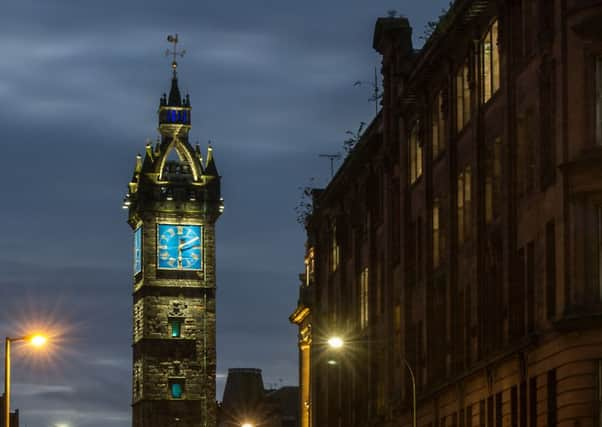Jean-Donan Olliero: How to make Scotland's cities smart


Smart cities are intended to improve quality of life, increase sustainability and create economic benefits through the use of data and digital technology.
Thanks to initiatives like the Smart Cities Scotland programme, our cities are now on a path to becoming leading digital hubs, attracting investment and creating growth.
Advertisement
Hide AdAdvertisement
Hide AdScotland’s smart cities transformation is already in progress. Edinburgh, for example, has already seen the roll out of intelligent lighting, free Wi-Fi in the city centre and smart bins dotted around the capital. Such projects are just the tip of the iceberg when the technology can be used for so many purposes, from managing urban congestion and enhancing public safety to helping improve air quality and cutting pollution.
So what can we do to make the most of the opportunities offered by new technology and create truly smart cities?
At the heart of a successful smart city is connectivity.
The machines must be able to talk to each other and remote access by those monitoring and maintaining the infrastructure is essential. Analysts and developers should be able to gather the data generated efficiently and in real time, to develop innovative uses of this data and provide new insights.
Accurate digital records must also be collated if we are to reap the benefits of infrastructure sharing and partnerships. Lack of accurate records on location, use, spare capacity, state, maintenance schedules and so on can be a stumbling block to the commercialisation of these assets or the forming of partnerships.
Creating a smart city is an expensive business, but there are ways to cut costs.
One solution is to make use of pre-existing infrastructure. Councils around Scotland are working to build partnerships between public and commercial entities to form the required networks and this is essential in delivering public services more cost effectively.
Assets such as lamp posts, building fronts, CCTV and columns are being used to extend WiFi, 3G and 4G availability. This infrastructure is of great interest to mobile and Internet of Things operators in urban areas as a cheaper and simpler way to provide enhanced capacity or coverage on their own networks.
Once the connectivity is in place, a smart city needs to have a system that allows feedback, retrieval of data and the capability of reacting to insight to make changes. The familiar and repeated pattern of test and learn.
Advertisement
Hide AdAdvertisement
Hide AdA living, breathing smart city must also be future proofed. Open standards should be used for the selection of technology, rather than proprietary products, to avoid restrictions when attempting to increase interactions and interconnections with other organisations and systems. Backwards compatibility should also be considered to minimise the need to purchase new operating systems or technology.
The smart city relies on a large number of factors to make it truly connected and successful. It is vital that Scotland’s cities’ senior leaders and planners continue the process of planning for integrated and thought-out smart city infrastructure that will benefit everyone living there, or passing through, in the not so distant future, taking into account the most pressing challenges of each city.
Jean-Donan Olliero is a principal consultant at FarrPoint